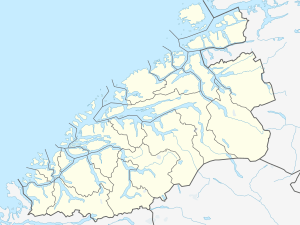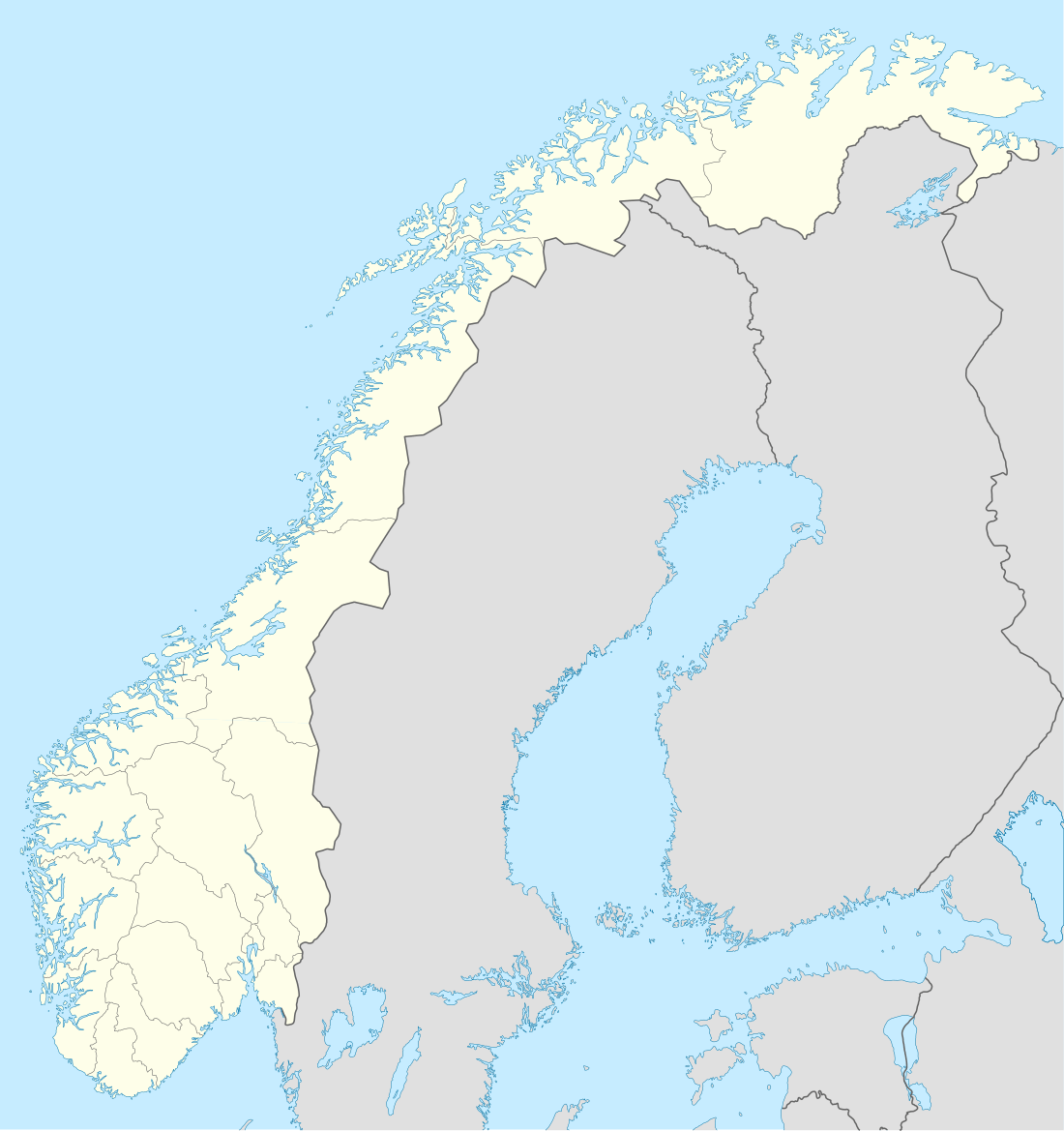Kornstad Church
Kornstad Church (Norwegian: Kornstad kyrkje) is a parish church of the Church of Norway in Averøy Municipality in Møre og Romsdal county, Norway. It is located in the village of Kornstad on the western coast of the island of Averøya, along the Kornstadfjorden. It is the church for the Kornstad parish which is part of the Ytre Nordmøre prosti (deanery) in the Diocese of Møre. The white, wooden church was built in a long church style in 1871 using plans by the architect Jacob Wilhelm Nordan. The church seats about 350 people.[1][2]
| Kornstad Church | |
|---|---|
| Kornstad kyrkje | |
 View of the church | |
 Kornstad Church Location of the church  Kornstad Church Kornstad Church (Norway) | |
| 62.9649°N 7.4566°E | |
| Location | Averøy Municipality, Møre og Romsdal |
| Country | Norway |
| Denomination | Church of Norway |
| Churchmanship | Evangelical Lutheran |
| History | |
| Status | Parish church |
| Events | Jacob Wilhelm Nordan |
| Architecture | |
| Functional status | Active |
| Architectural type | Long church |
| Completed | 1871 |
| Specifications | |
| Capacity | 350 |
| Materials | Wood |
| Administration | |
| Parish | Kornstad |
| Deanery | Ytre Nordmøre prosti |
| Diocese | Møre |
History
The first church at Kornstad was built before 17 June 1386 when the State Archives in Trondheim says there was a mass held at Kornstad Church. In 1661, the church was described as a timber-framed, cruciform style church. That church existed for a long time and was probably the one that was torn down in 1871 when the present church was built. There may have been a second church built at some point in between the first church and the present church, but that is not definitively known. The present church was built in 1871 and many items from the old church were saved and re-used in the present church. Some of those items include the church bells and the two altar candlesticks.[3][4]
See also
- List of churches in Møre og Romsdal
References
- "Kornstad kirke". Kirkesøk: Kirkebyggdatabasen. Retrieved 2019-05-26.
- "Oversikt over Nåværende Kirker" (in Norwegian). KirkeKonsulenten.no. Retrieved 2019-05-26.
- "Kornstad Kirke" (in Norwegian). Averøy Kirkelige Fellesråd. Archived from the original on 2013-06-20. Retrieved 2013-05-05.
- "Kornstad kirkested" (in Norwegian). Norwegian Directorate for Cultural Heritage. Retrieved 2019-05-26.